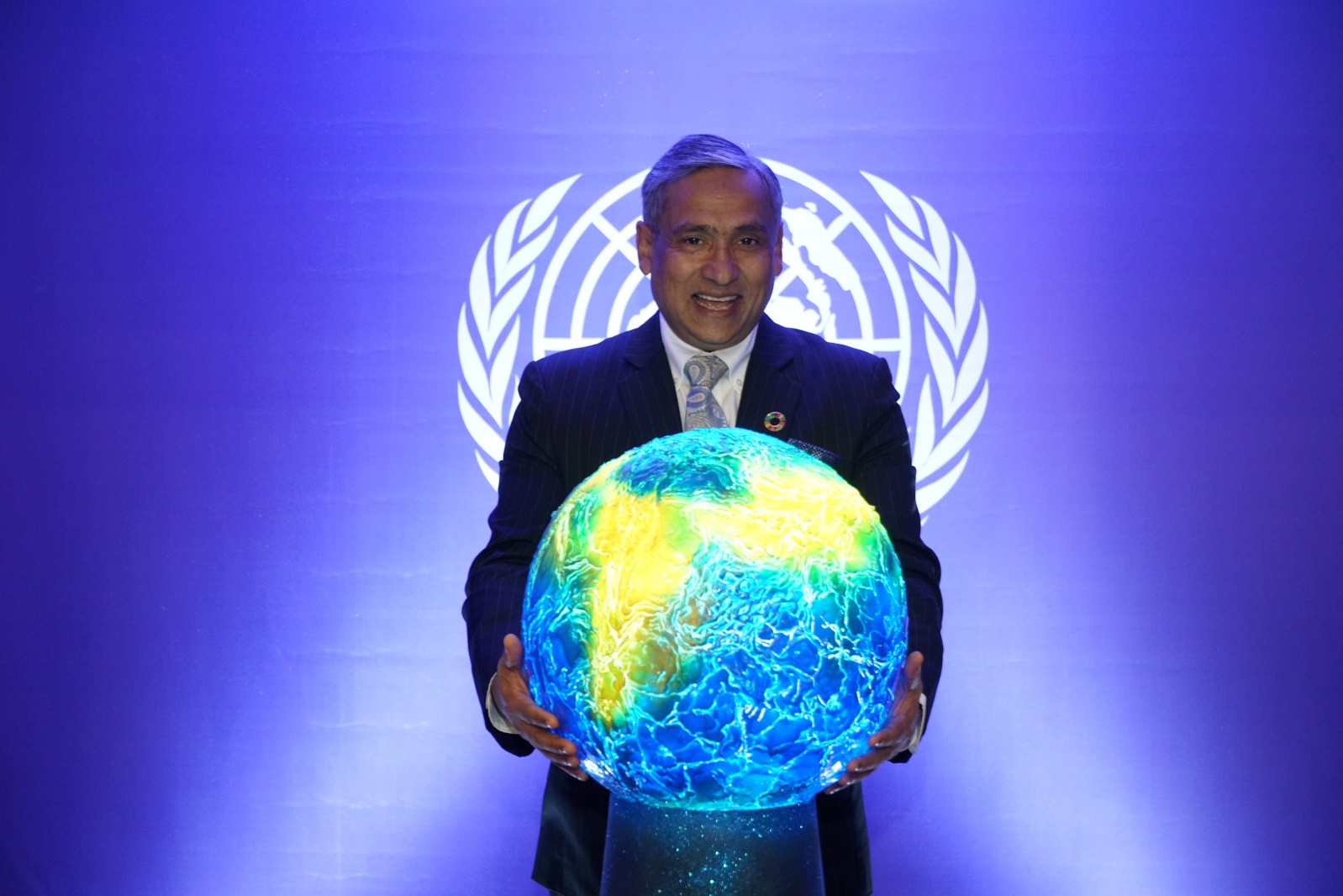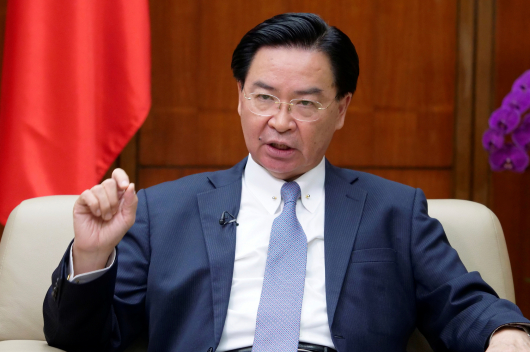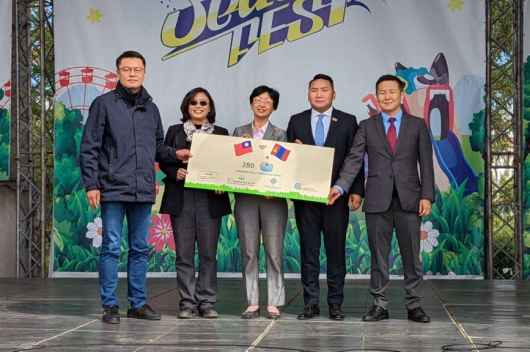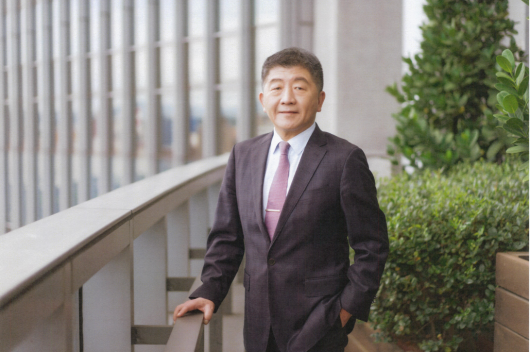Interview with UN’s Resident Coordinator in Mongolia, Tapan Mishra
We are very pleased to have you today. As you are meeting with our readers for the first time would you please tell us a little more about your background.
Thank you very much for inviting me. I am very pleased to greet your readers and wish them health, prosperity and happiness in the New Year.
As for me, I was born and grew up in Northern India and started my career in the private sector, in a petroleum company. I also worked for the public sector and academia in India. I joined the UN system in 2003 as the UNDP Learning Advisor and Deputy Chief of the Learning Resources Centre (LRC) in the Office of Human Resources, Bureau of Management. In 2007 I became the Director and Chief of LRC and worked there till 2013. Thereafter, I served on numerous assignments as Senior Advisor at the Business Solutions Exchange, supporting Country Offices as well as Offices in Headquarters including the Human Development Report Office, and the Bureau of Policy and Programme Support. In 2015 I was appointed the UN RC in North Korea and served there for over 4 years in a very uneasy geopolitical context, as you can imagine. Mongolia is a completely different story. I have made a work trip to Mongolia in 2017 and fell in love with your beautiful country and friendly people. I set a goal of coming back to Mongolia as UNRC and here I am, working and living in Mongolia – now into my fourth month. I’m happy, privileged and excited to be here, in the country of the enteral blue skies and tremendous development potential.
What is your impression of Mongolia and what’s your evaluation of its socio-economic and human development progress?
What really attracted me towards Mongolia is its obvious development potential. This includes its vast young population, with one in three people aged 15-34. Furthermore, education is traditionally revered, and 98 percent of Mongolia’s population is literate. Mongolia has a proud history and rich, unique culture that remains in-tact, despite globalisation. You have much natural wealth that if managed properly along with economic diversification, can make a very good living for just a little over three million of the Mongolian population. Moreover, Mongolia is a dynamic, multiparty democracy ensuring participation of the citizens in decision-making, respect for human rights, and freedom of speech. This fall, after a series of consultations with a wide range of social representatives, the Parliament of Mongolia passed critical amendments to the Constitution aiming at strengthening democracy, addressing separation of powers of the state and enhancing accountability of judicial systems and local governance.
As you know Mongolia joined the UN in 1961, and ever since, the UN’s goal has been supporting the country in implementation of its development goals. Now with the UN reform, under which the Office of the Resident Coordinator has expanded with more capacity and funding along with the UN resident coordinator becoming an independent and empowered representative of the UN Secretary General, the UN will render even more effective and needs-tailored assistance to Mongolia. This recent UN reform has taken place after the member states mandated the UN to make bold steps to better assist the countries in implementation of the Global Agenda 2030. So now all of the 15 UN agencies represented in Mongolia will be working in a more efficient and coordinated way to help the country in achieving the SDGs – currently the primary focus of the UN assistance to member states.
The Mongolian Government has delivered its first Voluntary National Review (VNR) on SDGs implementation last July to the High Level Political Forum on SDGs. The UN has supported the government in producing this report.
Mongolia, and indeed the world, are now four years into carrying out the SDGs. These 17 goals represent a global promise to end poverty, reduce inequality and ensure that our planet can continue to sustain life by the year 2030. Aiming at poverty elimination, zero hunger, equality and fighting climate change, the SDGs are the most ambitious agenda in human history. Mongolia was an early adopter of the SDGs, including many of the goals within its own Sustainable Development Vision for 2030, just 5 months after the SDGs were adopted. Your country a was one of 47 nations to present its first VNR to the UN High Level Political Forum on the SDGs in July. As means of evaluating Mongolia’s progress in sustainable development to fellow UN member states, the VNR, led by the NDA, was developed with inputs from a wide range of stakeholders: government agencies, civil society and international partners. Last fall, Mongolia has finalized a large exercise on developing its own national targets and indicators, localizing global indicators and targets to measure the progress towards SDGs. Now the adoption of those by Parliament is pending.
What were the highlights of Mongolia’s VNR?
Mongolia’s VNR revealed the country has a sound foundation for ensuring future sustainable development. Mongolia’s economy has been recovering, with growth stabilizing at over 6%. This creates the right fiscal and investment conditions to support the SDGs. However, the benefits of renewed growth have not translated into better livelihood options and employment opportunities for all. With mining and agriculture still the main sources of revenue, Mongolia’s economic gains remain fragile and cyclical. Mining is susceptible to commodity price fluctuations, while agriculture is heavily dependent on environment. This dependence is compounded by the fact that climate change is already taking a toll in Mongolia. While the global safe threshold is 1.5 degrees Celsius, Mongolia’s temperatures have already jumped by 2.2 degrees over the last 75 years. The combined impact of climate change, mining and other factors related to human activities are damaging Mongolia’s rare ecosystems. With hotter summers and harsher winters, rural livelihoods, especially of herders – who make up one third of Mongolia’s population – are increasingly under strain. As a result, many have migrated to urban areas in recent years, mostly to Ulaanbaatar. This exacerbates its air and environmental pollution, as new migrants settle in ger areas around Ulaanbaatar, without central heating. According to the 2018 UNDP study, mortality attributed to indoor/ outdoor air pollution was as high as 155.9 deaths/100,000 people, placing Mongolia among the most high-impacted countries. Mitigating such challenges calls for prioritizing social and environmental spending, alongside focusing on economic growth, to ensure development is sustainable and includes everyone.
The report also mentions a number of social groups at risk of being left behind in development gains. Moreover, it mentions risks of reversing any gains unless the needs of these groups of people are met. Can you explain?
The VNR was guided by the principle of “Leaving No One Behind”, the key human-rights based principle behind the SDGs. Six population groups at-risk were identified through studies and focus group discussions. They are: children, people with disabilities, young people aged 15-24, herders, internal migrants living in urban ger areas, and the elderly. The VNR revealed they are at risk of not benefitting from development gains due to deepening inequality. To mention here the inequality was the highlight of the UNDP’s Human Development Report 2019 that was released this month as well. Although Mongolia remains in the high human development group inequality leads to loss in human development. Thus in Mongolia, this includes a loss of 13.1 percent in life expectancy at birth, 11.9 percent in education, and 15.7 in income inequality. These figures give a glimpse to the differential experiences of human development for those that are marginalized in Mongolia.
As of 2016 and through 2019, 1 in 3 Mongolians live in poverty, jumping from one in five in 2014, before it’s economic slowdown. This shows how quickly development gains can be reversed by economic shocks. Furthermore, the rate of poverty is uneven, highlighting disparities between regions, with nearly 35% of those in rural areas living in poverty, versus about 27% in urban areas. National unemployment is about 8% on average, yet unemployment among young people aged 18-24 is almost triple that, at over 22%. Furthermore, only 20% of persons with disabilities are employed. The male-female salary gap is 11.4%. Additionally, while Mongolia is a representative democracy, only 13 out of 76 seats in Parliament are occupied by women.
As a response to these challenges, the VNR highlighted the need for improving Mongolia’s development policy and planning through policy integration, coherence, continuity and sustainability. About 200 policy documents were found to lack correlation and integration, in the course of preparing the VNR. Many also had little research and weak methodologies. It also stressed that it is important to link policies with financing, so they can actually be carried out. Finally, it found progress must be monitored and reported on effectively, so bottlenecks can be fixed as early as possible. This calls for prioritizing social and environmental spending, in addition to economic growth.
Frankly speaking, the SDGs still sound to be somewhat the government’s and international agencies’ agenda, too remote from the every day lives of ordinary citizens. How each one of us can participate?
The SDGs are the Global Agenda are for all people and the planet. They cannot be met by government efforts alone. For one, the private sector is critical. 70% of the funds and innovations needed to meet the global goals for our world must come from companies. Every citizen also has a vital role to play. As Mongolians say “every drop of water helps make the sea”. The same applies for the Global Goals – no effort is too small.
Conscious choices count. The UN calls for an environmentally and socially responsible approach from everyone. For example, by using public transport, walking, or car-pooling, instead of driving your own car. By reducing, re-using and recycling, such as by choosing multi-use textile bags instead of single use plastic bags. We can also do more to use less energy and water, plant trees, reach out to the disadvantaged, support each other, speak out again violence, and stand up for human rights. We can play our part by spreading the call for positive action among our colleagues, friends and family.
Much like human rights, the SDGs are indivisible. We cannot meet one without the others – goal 5 on gender equality for instance, depends on goal 4, quality education for all, and vice versa. Thus, all 17 goals must be met – and given they cross so many different areas, from water management, to health, we need every sector, and every individual, to achieve this.
How are UN agencies in Mongolia supporting the country in its progress towards implementing the SDGs? What programmes and projects are being enacted?
The UN in Mongolia consists of 15 UN agencies working in different areas of development to help Mongolia implement the Global Agenda for 2030. This includes: protecting the environment, building democratic governance, ensuring food security, protecting maternal and child health, promoting decent jobs, as well as enabling stronger public services, such as healthcare, education, water and sanitation.
In 2017 and 2018, UN agencies mobilized USD 61.1 million, of which USD 43.23 million were used for 82 programmes across the country. There was a special focus on five SDGs in particular, that help catalyse the rest: goal 2-Zero Hunger, goal 3 – Health, goal 5 – Gender Equality, goal 15 – Life on Land and goal 16 – Peace, Justice, and Strong Institutions.
We help include the SDGs within national development policies, plans, budgets and institutions. For example, we built an SDG-led budget process for the health sector, ensuring enough funding to improve medical access for every citizen, especially the most vulnerable. We also supported Mongolia’s civil service reform, to deliver a 21st-century public service, based on merit, that can deliver vital public services – from education, to water management – to all of Mongolia’s people.
Furthermore, we advise the Government and others on how SDG processes and principles can be adopted, to meet Mongolia’s Sustainable Development Vision 2030. We have also begun using a new UN online system to monitor real time progress in programming and operations, with a link to each of the 17 goals. The new UN web platform, UN Info, gives public access to progress in our programmes.
The UN Secretary-General convened an important Climate Action Summit in August in New York City and in December in Madrid. UN supported the Mongolian Government’s decision on banning usage of raw coal in Ulaanbaatar. With a global goal to achieve zero-net emissions by 2050, do you think Mongolia is acting boldly enough towards a low-carbon future?
Cutting carbon emissions is extremely important amid an escalating climate emergency, that has contributed to warming oceans and rising sea levels. From 1901 to 2010, the global average sea level rose by 19 cm, due to ice melting. Worldwide, direct economic losses from disasters including greater storms, floods and droughts are estimated at almost $3 trillion. Climate linked disasters claimed an estimated 1.3 million lives between 1998 and 2017. Rising temperatures could lead to global productivity losses equal to 80 million full-time jobs in the year 2030.
In Mongolia, one of the most vulnerable countries to climate change, glaciers have melted by 40% since 1990. Over 600 lakes have dried up, while a quarter of the country has turned to desert. Like many other Asian nations, it also faces the added issue of air pollution, which is both a cause and effect of climate change, due to climate-induced migration to cities and the country’s coal-based economy.
According to UNICEF, the health costs of air pollution in Mongolia are extremely high, with 3.5-fold increase in foetal deaths in winter, as well as recurring lung infections and reduced lung function for children. Failure to reduce air pollution would lead to a rise in health costs for air pollution-induced diseases in children by 33% in the next 8 yrs. This will cost health providers an extra 4.8 billion MNT a year at least, by 2025 (UNICEF/NCPH). The World Bank estimates that across Mongolia, over 2,400 people died due to air pollution in 2013 – a loss equal to 6.9% of the country’s GDP.
Unfortunately, worldwide investment in fossil fuels continues to exceed investments in renewables. So the UN is calling on governments to raise their nationally determined contributions under the Paris Agreement, and aim for zero-net emissions by 2050.
Mongolia remains a coal-based economy. However, the Government’s ban on burning row coal in the capital enacted in May is an important step towards a cleaner energy future. It is also essential to move from mitigation measures, to addressing the root causes of air-pollution, including an erosion of rural livelihoods due to climate change and economic inequalities. This calls for devising effective rural development policies, investing in social and environmental protection, and maintaining consistent policies on air pollution.
We believe that energy pricing should be reformed, to count health and environmental costs in the price of coal, to deter its use and divert more spending in insulation, particularly for those using on-grid heating. Currently, only those living in ger districts pay the full cost of coal. This simply increases poverty among the city’s poorest – who pay 7 times more than those with central heating – while failing to address air pollution caused by coal-fired central heating.
Mongolia must also encourage public and private funding into renewables. With 270 sunny days a year and 10% of its territory estimated to lend itself to wind energy, Mongolia has strong potential to develop renewable energy, provided the right policies are in place to attract and support those investments.
What is the UN planning for the 2020?
The UN is launching a Decade of Action for the Sustainable Development Goals. Just 10 years are left for the world to achieve the SDGs. Given the current climate emergency there is no “Plan B” for the humankind. If we do not make sure we achieve the 17 Goals for the Planet and the People we will rob our future generations from living in the world free from hunger and deprivation. This is why the voices of the youth are becoming louder and stronger as they realize that they have to stand up for the world they will be living in. Hence the UN has been supporting youth in speaking out, thinking big and keeping up the pressure on the government to fulfil the commitments to the Global Agenda 2030.
Next year the UN will celebrate its 75th anniversary. I’m pleased to inform that Mongolia is among 25 other countries to pilot the UN75 public dialogue initiated by the UN Secretary General, Antonio Guterres. We’ve launched the UN75 first dialogue last week, on 20 December, along with acknowledging the supporters of our very successful SDGs mobilization campaign in 2019. Our SDGs supporters, media and youth representatives have exchanged their thoughts about their vision of the world in the coming 25 years, the ways forward and how the UN can help the countries and the people on the way forward.
With the UN reform we are switching to a new cooperation framework to be signed with the member states. The UN Development Assistance Framework signed with Mongolia from 2017-2021 will be evaluated next year through the country cooperation assessment exercise and the UN Sustainable Development Cooperation Framework will be elaborated to increase the efficiency of the UN assistance in supporting Mongolia in implementing SDGs.
On behalf of the United Nations I’d like to greet the people of Mongolia and the Mongolian government with the coming new year and the festive season. The UN stands ready to support Mongolia in its implementation of the SDGs tackling issues of inequality, including gender and income inequalities, gender based violence, children’s rights and access to quality health care, education and decent employment. We’ll stand with the people of Mongolia to create the country in which each person can live up to his or her potential and fulfil his or her aspirations. Happy New Year, Mongolia!
A.TULGA
 3,376.11
3,376.11












Related News